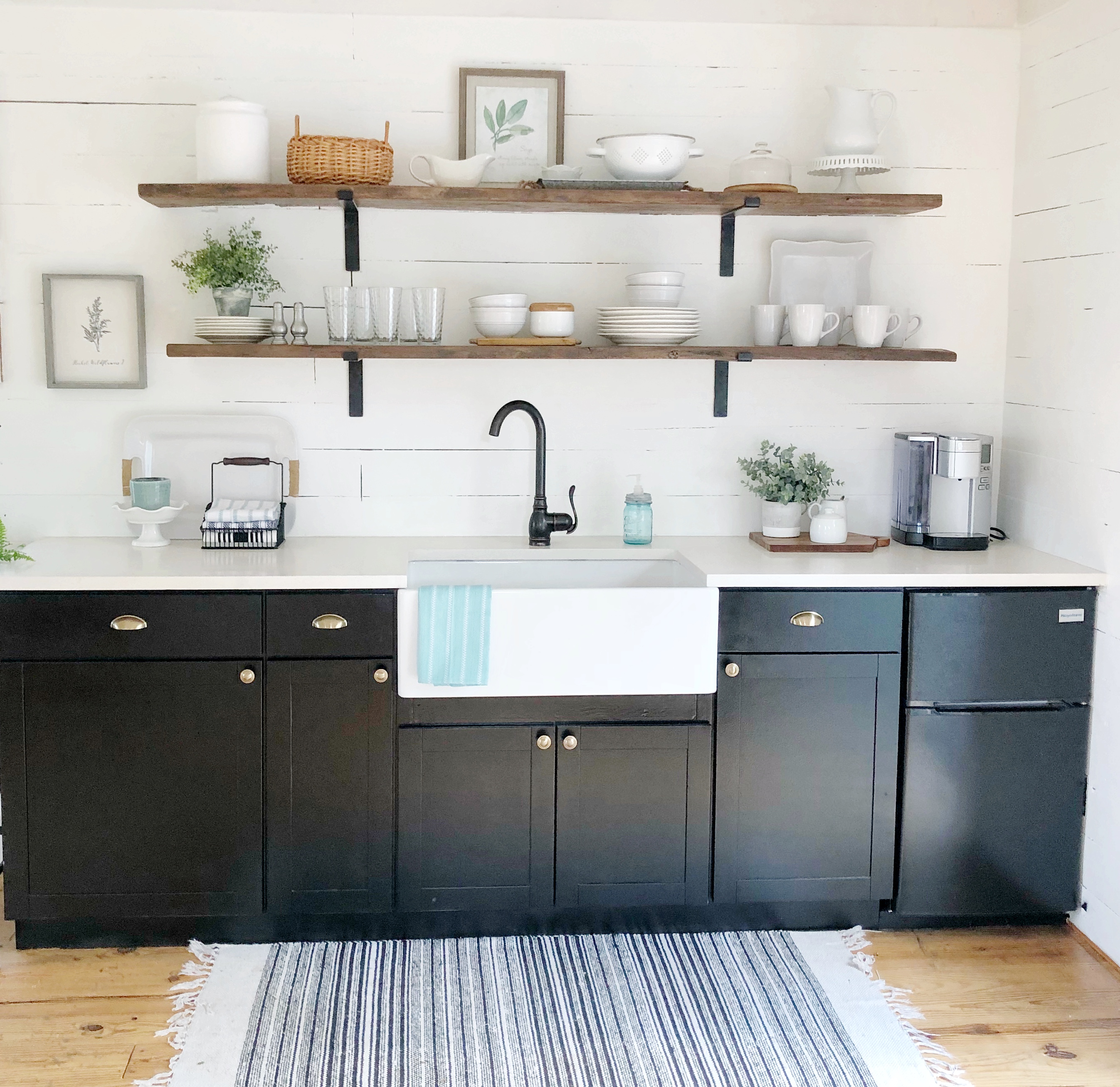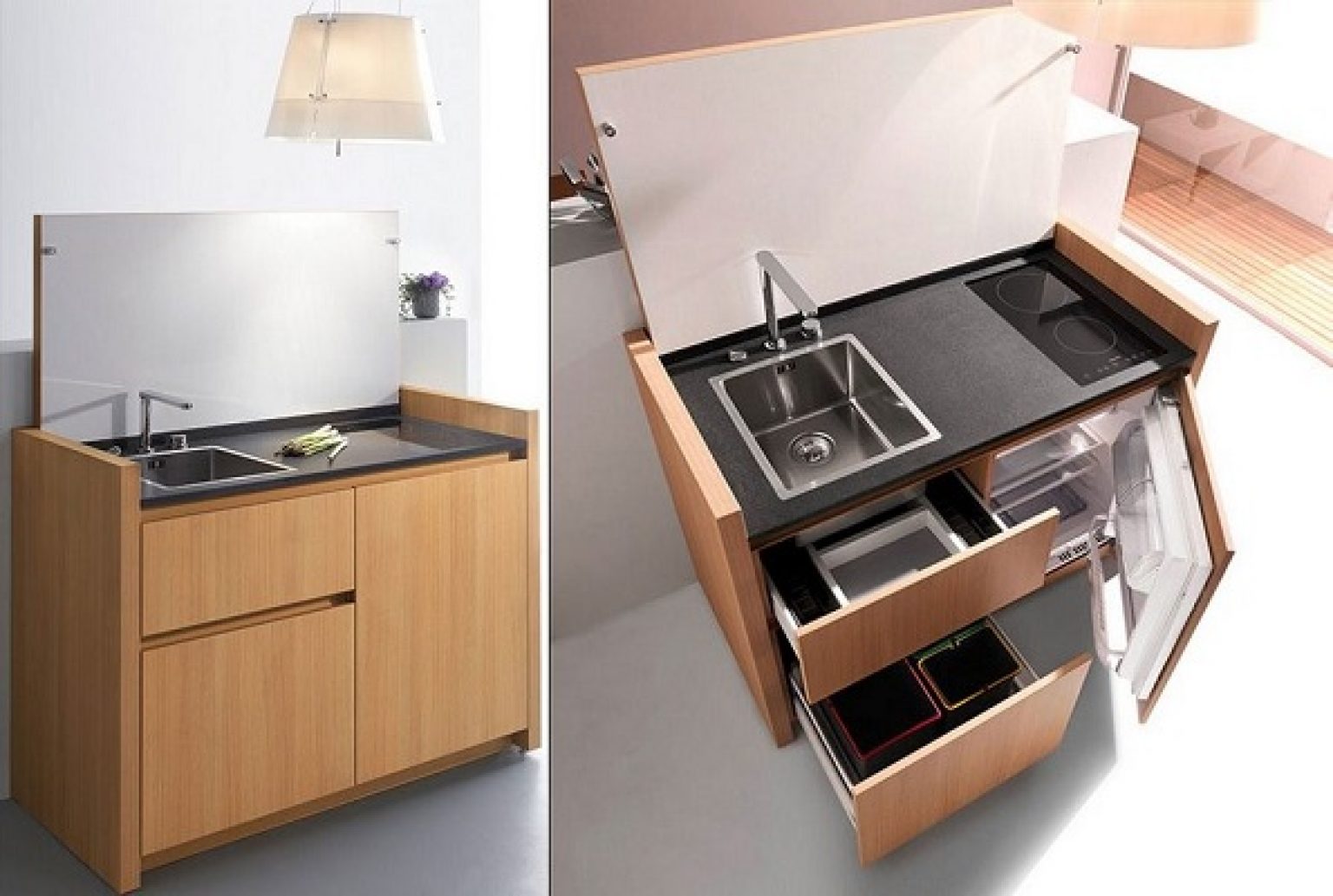A kitchenette is a small, compact cooking space commonly found in apartments, studios, and other limited-space living environments. While it may seem like just a smaller version of a full kitchen, there are distinct differences that make a kitchenette unique. In this article, we’ll explore what a kitchenette is, how it differs from a traditional kitchen, and why it’s becoming increasingly popular in modern living spaces.
What Exactly Is a Kitchenette?
A kitchenette is essentially a scaled-down version of a full kitchen. It typically includes the basic elements needed for simple meal preparation, such as a sink, a microwave or toaster oven, a mini-fridge, and a stovetop with one or two burners. Unlike a full kitchen, which might have ample counter space, storage cabinets, and a dishwasher, a kitchenette is designed to be functional but compact.
This type of space is ideal for those who need a place to prepare meals without the need for a large kitchen. It’s often found in:
- Studios: To maximize space and avoid having a full kitchen.
- Guest suites or in-law units: For visitors or family members who need their own cooking area.
- Hotel rooms or short-term rentals: Especially in extended-stay hotels.
- RVs or tiny homes: Where every inch of space counts.
Kitchenettes can also be found in outdoor living areas, game rooms, or bonus rooms where the main kitchen is located elsewhere.
How Does a Kitchenette Differ From a Full Kitchen?

While both kitchens and kitchenettes serve the same purpose—preparing food—they differ significantly in size, layout, and functionality.
| Feature | Kitchen | Kitchenette |
|---|---|---|
| Size | Large, often 100+ square feet | Small, usually 5–8 feet long |
| Counter Space | Ample | Limited |
| Storage | Multiple cabinets and drawers | Minimal, often open shelving |
| Appliances | Full-size fridge, oven, dishwasher, etc. | Mini-fridge, microwave, toaster oven, and stovetop |
| Sink | Large, with plenty of room | Compact, sometimes with limited space |
| Dishwasher | Usually included | Rarely included |
As you can see, a kitchenette is not a substitute for a full kitchen. It’s more of a supplementary space that provides the essentials for quick meals and snacks.
Why Are Kitchenettes Popular?

There are several reasons why kitchenettes are gaining popularity in the United States:
1. Space Efficiency
In urban areas where living spaces are limited, a kitchenette allows residents to save valuable square footage. Instead of dedicating an entire room to a full kitchen, people can use a small corner or nook for a compact cooking area.
2. Cost-Effective
Installing a full kitchen can be expensive. A kitchenette, on the other hand, is much cheaper to build or retrofit. It requires fewer materials, less labor, and often uses smaller appliances that are more affordable.
3. Versatility
Kitchenettes can be used in a variety of settings, including:
- Tiny homes – Perfect for those who want to live simply and minimize their footprint.
- RVs or campers – Ideal for travelers who need a place to cook while on the go.
- Office breakrooms – Provide employees with a convenient place to heat up meals or make coffee.
4. Easy to Clean
Because they’re smaller, kitchenettes are easier to clean than full-sized kitchens. A quick wipe-down or a half-hour cleaning session is usually enough to keep things tidy.
What Can You Cook in a Kitchenette?

While a kitchenette may not be ideal for elaborate meals, it’s perfect for simple, one-pot dishes. Here are some great options:
- Pasta dishes – Boil water, add pasta, and toss with sauce.
- Sautéed vegetables – Use the stovetop to quickly cook fresh veggies.
- Pan-fried proteins – Chicken, fish, or tofu can be cooked on the stove.
- Microwave meals – Steam-in-the-bag rice, frozen dinners, or pre-made meals.
If you’re using a toaster oven, you can also bake items like cookies, pizza, or even a small casserole.
However, if you plan to do a lot of cooking, you may need to simplify your recipes. Stick to meals that require fewer utensils and less cleanup.
What Should You Include in a Kitchenette?
To make your kitchenette functional, here are the essential items you should include:
- Sink – A small sink is necessary for washing dishes and preparing food.
- Stovetop – At least one burner is essential for cooking.
- Mini-fridge – Keeps drinks and perishables cold.
- Microwave or toaster oven – For heating and baking.
- Storage – Use vertical space or open shelves to store pots, pans, and utensils.
- Dish rack – Helps dry dishes after washing.
Some kitchenettes may also include a coffee maker, especially in hotel rooms or short-term rentals.
Tips for Designing a Kitchenette

Even though a kitchenette is small, it can still be stylish and functional. Here are some design tips to help you make the most of your space:
1. Use Vertical Space
Install overhead cabinets or wall-mounted shelves to free up counter space.
2. Choose Light Colors
Light-colored walls and cabinets can make a small kitchenette feel more open and airy.
3. Add Mirrors
Mirrors can reflect light and create the illusion of a larger space.
4. Keep It Simple
Avoid clutter by only keeping essential items. Choose minimalist decor that doesn’t take up too much space.
5. Use Multi-Functional Furniture
Opt for foldable chairs, stackable pots, or a table that doubles as a countertop.
FAQs About Kitchenettes
Q: Can I cook a full meal in a kitchenette?
A: Yes, but you’ll need to simplify your recipes. Focus on one-pot meals and use the microwave or toaster oven for cooking.
Q: Do kitchenettes have dishwashers?
A: Most do not. They typically rely on hand-washing dishes due to limited sink space.
Q: How much does it cost to install a kitchenette?
A: The cost varies depending on the size and materials used. A basic setup can range from $500 to $2,000.
Q: Are kitchenettes suitable for full-time living?
A: While they’re not ideal for heavy cooking, they can work for people who don’t cook often or prefer to eat out.
Conclusion
A kitchenette is more than just a small kitchen—it’s a smart, space-saving solution for modern living. Whether you’re renting a studio, living in a tiny home, or staying in a hotel, a kitchenette offers the convenience of a cooking space without the hassle of a full kitchen. With the right design and layout, even the smallest kitchenette can be both functional and stylish.
If you’re looking to maximize your space or simplify your lifestyle, consider adding a kitchenette to your home or rental property. It may be small, but it can make a big difference in your daily routine.
Author: Sarah Thompson
Title/Role: Home Design Expert
Credentials: With over a decade of experience in interior design and real estate, Sarah has helped thousands of homeowners and renters optimize their living spaces. She specializes in small-space design and sustainable living solutions.
Profile Link: Sarah Thompson Design
Sources:
– Apartment Therapy – Kitchenette Ideas
– The Spruce – Small Kitchen Design Tips
– HGTV – Kitchenette vs. Kitchen
Internal Links:
– How to Renovate a Small Kitchen
– Top 10 Tiny Home Designs
– Modern Kitchen Trends 2025
Call to Action:
Stay updated with the latest news and trends in home design and living spaces. Explore our blog for more insights on making the most of your home, no matter the size.










More Stories
US Trending News: The Amanda Kelly Story
US Trending News: What You Need to Know About the Baby Bar Exam
US Trending News: What You Need to Know About the Bar Exam